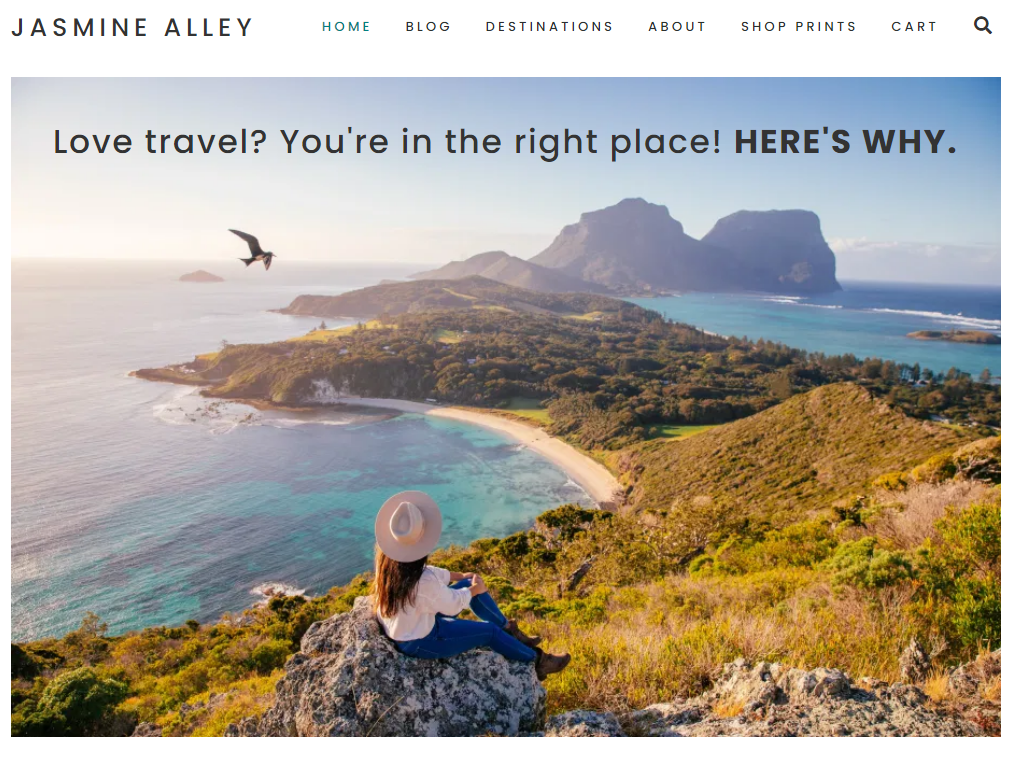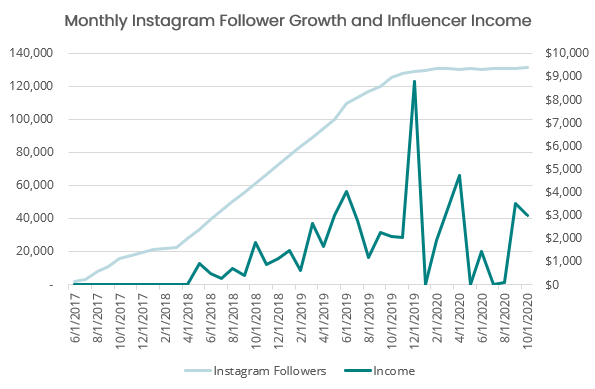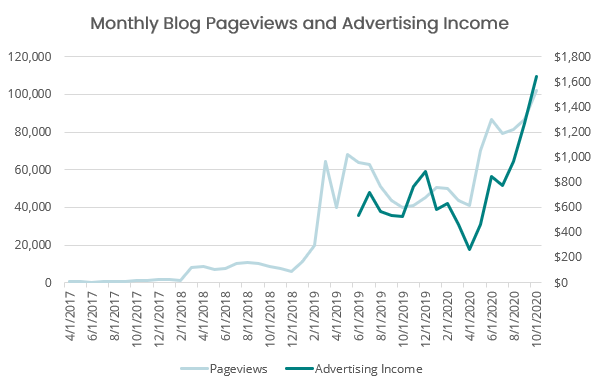To validate or not to validate? The vast majority of founders say yes: - **84% of SaaS founders now validate** their business ideas, up ~30% from the previous year. Lean growth methods preferred by indie hackers are gaining in popularity across the b
To validate or not to validate? The vast majority of founders say yes:
-
84% of SaaS founders now validate their business ideas, up ~30% from the previous year. Lean growth methods preferred by indie hackers are gaining in popularity across the broader startup community.
-
New data suggests Google searchers are increasingly clicking on featured snippets rather than organic search results. To potentially land your own snippet, write factual information and add HTML tables to your site.
-
College sweethearts recently hit $2K MRR with their travel and photography site. With travel expected to boom later this year due to increased availability of vaccines, this couple looks to also launch a new product.
Want to share your ideas with nearly 70K indie hackers? Submit a section for us to include in a future newsletter. —Channing
🔎 Founders Are Validating Business Ideas in Record Numbers

from the Indie Economy newsletter by Jay Avery
Last week, MicroConf released its annual report on independent SaaS companies. Some of the most surprising trends were found in relation to pricing and idea formation.
Validation is up significantly from last year
The no-background: MicroConf is a popular community geared towards non-venture track startup founders. Its annual report covers industry-wide stats, and the major increase in validation from 2019 to 2020 immediately stands out.
MicroConf found that 84% of SaaS founders validated their business idea before building. This is a ~30% increase from the total in last year's report, showing that validation has caught on in a major way within the startup community.
What this means: As founders have shared information on the benefits of validation, it has become adopted more frequently. By far, the top method of validation was building a prototype or MVP. The second most popular approach to validation was asking the existing audience. The once-popular landing page/strong call-to-action method was used by only 4% of founders this year, which is a surprising figure as well.

What's missing: Validation can be a tricky area for founders, and many don't know where to start. Although this report highlights that founders are seeing the importance of validation, it doesn't provide information on what actually garners the strongest results. Methods of validation, and the results produced, would have been a great area for the report to explore further. MicroConf founder Rob Walling mentioned running deeper analysis on validation approaches, so we may see an addendum released on this specific topic soon.
Bottom line: Founders are increasingly joining communities and using platforms to share information. Years ago, many companies intentionally kept information under wraps, and the free exchange of ideas was not very common. However, from building in public to popular conferences, the dissemination of information is now highly encouraged. Startup communities have jumpstarted this trend of openness in business, and it has strengthened the startup landscape overall.
Interesting findings
Other interesting findings from the report include:
- ~90% of founders developed their product ideas from a problem that they personally experienced, or one that someone they knew (relative, friend, client) had experienced. This shows that you often don't need to look far to find a viable startup idea or fill a niche in a particular market.
- Free trials are on the rise: 71% of companies were found to be offering them this year, up from 64% in last year's report.
- While free trials are rising, 36% of companies that offer a free trial don't know their visitor-to-trial conversion rate. It's likely that people believe that a free trial is a guaranteed benefit, but for some companies, the free trial could be hurting more than helping. For others, there may be no effect at all. It would be interesting to delve more into this particular subset and gather further learnings.
- Founders worked fewer hours per week this year. This could be attributed to many things, including COVID-19 effects and/or pivoting business models.
You can read the full report here. What findings stood out most to you? Which ones do you think founders should focus on this year?
Discuss this story, or subscribe to Indie Economy for more.
📰 In the News

👁 Clubhouse will add additional encryption amid troubling concerns about Chinese software companies spying on users.
▷ Parler is back online and being hosted by SkySilk. All of the old posts and content is gone, though a backup is being used in the ongoing investigation of the US Capitol riot.
💻 Last week's major Notion outage was caused by phishing complaints. The company says there is no threat of a repeat outage.
🙈 Microsoft and Stanford released facial recognition data without consent, leading to increased calls for explicit communication around the practice.
🏨 Google was fined in France over misleading hotel star ratings following an independent consumer watchdog report.
🔦 Google's Featured Snippets Spotlight Certain Sites

from The Content Marketer newsletter by Marc Bromhall
New data indicates that Google users tend to click on the featured snippets more than the organic search results. As Google continues its transition from search engine to discovery engine, the featured snippets function will become increasingly important for founders.
What is a featured snippet?
Here's an example: We typed in "best time to post on Facebook." The screen-grab below shows that the top result is a featured snippet. Google has pulled out some texts from a website and presented the answer in a prominent way, and we don't have to dig much further.

This featured snippet is pulled from the website buffer.com, but further down the page are other websites addressing this topic as well. The featured snippet is displayed much more prominently at the top of the page.
Zero click searches
Google endeavors to provide the very best experience to their users. In regards to "search," this means finding and packaging up information a user is looking for in the most digestible way. Featured snippets helps achieve this.
Having your website appear in featured snippets is going to get you a lot more eyeballs, and potentially a lot more clicks. We say "potentially" because the actual answer is included on the search page; in many cases, the user won't need to click through. This creates the event known as "zero click searches."
However, even if the user does not click on your site, the pros of landing the featured snippet still outweigh the cons in terms of traffic.
Getting into featured snippets
There is no straightforward formula that you can follow to land the featured snippet because Google hasn't published any information on the topic.
Looking at the result for "best time to post on Facebook," there's no particular reason why buffer.com landed the featured snippet ahead of the other publishers further down the page. There are, however, some things that you can focus on that increase your chances of landing the featured snippet.
Here are the different types of featured snippets and what you can do to land them:
- Paragraph or a definition = Write something that is factual
In the above example, the result for "best time to post on Facebook" is a paragraph or definition featured snippet. To give yourself the best chance of getting into this featured snippet you should aim to write something that is factual.
Avoid having any opinions or subjective information in your text. Think about it as a Q&A: what is the question, and how can I directly answer that question in the simplest, most factual language? Choose brevity over verbosity. Research shows that most of these paragraph texts are only 40-60 words long.
- Table snippets = Use an HTML table
With table snippets, Google simply pulls the table from a website and presents it in the results. For example, when looking for the size of a Goodyear tire, you can see the results are presented in a table within the featured snippet. This table is from a website called tiresize.com.

To give yourself the best chance of featuring in this type of Feature Snippet you'll want to make sure you use an HTML table. You'll also want to precede the table with an appropriate header.
To check out the other two types of featured snippets, and how to land them, head to the original article here.
Discuss this story, or subscribe to The Content Marketer for more.
🤖 Idea Bot Beep Boop

from IdeasAI by Pieter Levels
Looking for a startup idea? I'm a GPT-3-powered business idea generator built by Pieter Levels. Here are today's top ideas:

To explore more ideas, subscribe to IdeasAI.
🛣 A College Love Story Led to a 2K MRR Travel Site

from the Deep Dive newsletter by Halden Ingwersen
It's a true indie hackers love story: Boy meets girl in college. Boy and girl graduate and get married. Boy and girl create a $2K MRR website.
For Harrison and Jasmine Alley of Jasmine Alley, a travel, photography, and lifestyle website, this is reality.

Upon finishing college at The University of Southern California, Harrison Alley found himself in over $70K worth of student loan debt. To pay it down, Harrison got a job in real estate finance (which wasn't his passion) and spent his downtime launching side projects. None of his early ideas gained any traction, but his failures taught him a lot about managing and marketing content using social media.
Jasmine brought her own unique skills to the table. She graduated college with a degree in Neuroscience, but discovered that her true passions were travel and photography. When the two decided to team up to launch a business, Jasmine's travel-based Instagram account was going viral on a regular basis. With Jasmine's photography and travel knowledge, and Harrison's knowledge of SEO and no-code tools, the couple decided to use their individual strengths to build their brand.

The Jasmine Alley website launched in 2017 using Wordpress (with Elementor's "Hello Theme") to host the site. The Alleys keep track of performance using Google Analytics, Search Console, Tailwind, Bluehost, and WP Engine, and use Instagram and Pinterest for marketing.
It took time to build up a following; most SEO and content campaigns take at least six months to build a strong organic audience. Content typically takes longer to catch on than product does, and the Alleys vowed to stick it out to pursue growth.
After launching, the next goal was to create a steady, stable income stream. Although the Alleys were receiving Instagram sponsorships, the revenue was far from consistent. After hitting 100K monthly page views in October 2020, they were accepted into an exclusive ad network called Ad Thrive, which pays content creators ~$20 for every 1k views. This was a big gain; Harrison notes that, as they grow, their MRR should stabilize with Ad Thrive:
I recommend display advertising with a premium ad network like Mediavine or Ad Thrive to anyone with a relatively high-traffic blog. I think it's a great way to monetize your content especially as you think of a product or service to offer your audience.

Jasmine and Harrison have also been building in public from the start. Reports on monthly web traffic and ad income are always shared on the blog's income report page.

By mid-2019, Harrison's loans were fully paid off so Jasmine quit her day job to work on the website full-time. Although COVID-19 halted most travel, working from home has given Harrison a chance to truly dig into optimizing the site's SEO. Since people are planning their post-COVID dream trips, the Alleys are expecting a huge traffic boom in 2021.
Jasmine and Harrison have two major goals ahead: First, Harrison wants to quit his day job and work on the site full-time. Also, they plan to create a related product to sell to their existing content audience.
Here is Harrison's advice on launching a content machine:
-
You don't need a product, service, startup capital, employees, office space, or even a business entity to start. If you have an audience, the rest can follow. Simply start writing great content that provides information on what people are already searching for. If you do enough of that, you can make money from advertising.
-
Learn SEO. Jasmine and Harrison had to write at least 100 SEO-optimized posts for low competition keywords before they got any traction. Harrison estimates it took them at least one year from the date of publishing the 100th post to see any material search engine traffic.
-
You can go viral, but it's never guaranteed. Keep working and be patient!
The duo recommends the following resources:
You can check out Jasmine Alley, Harrison's Twitter or join their email list.
Harrison is happy to also answer any questions about their journey in the comments!
Discuss this story, or subscribe to Deep Dive for more.
🐦 The Tweetmaster's Pick

by Tweetmaster Flex
I post the tweets indie hackers share the most. Here's today's pick:

🏁 Enjoy This Newsletter?
Forward it to a friend, and let them know they can subscribe here.
Also, you can submit a section for us to include in a future newsletter.
Special thanks to Jay Avery for editing this issue, to Nathalie Zwimpfer for the illustrations, and to Marc Bromhall and Halden Ingwersen for contributing posts. —Channing














